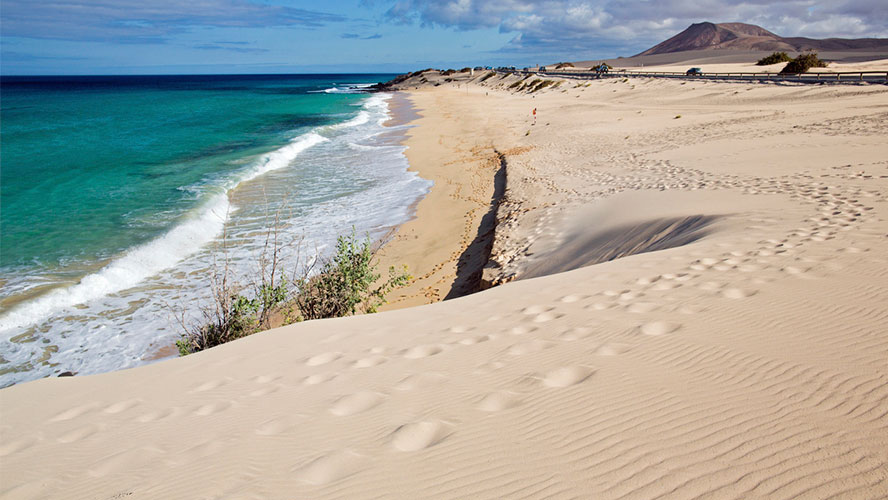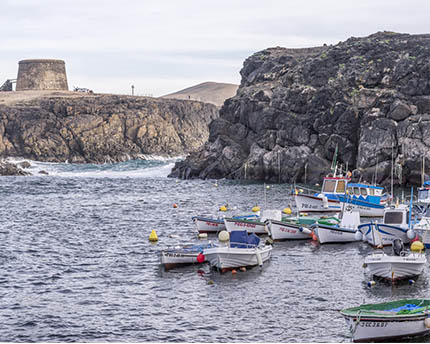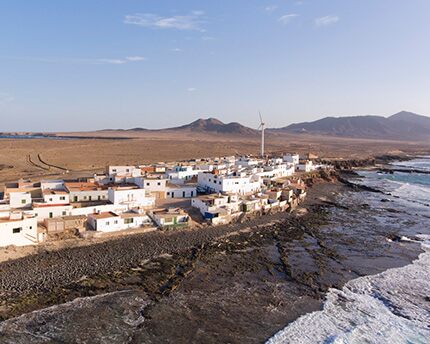If you’d like to learn more about it, you will need to explore its history and archaeological heritage to discover why it was even known as the sacred mountain of Fuerteventura by the island’s indigenous people.
Tindaya Mountain: archaeology, astronomy and legends
A dry and rocky path leads to the foot of Tindaya, which means ‘large mountain’ in the language of the Guanche, the aboriginal inhabitants of the Canary Islands. The place is magical and full of energy and, according to archaeoastronomers its summit was turned into an open-air temple by the aboriginals. There they worshiped the stars, pleaded for rain to water their crops, predicted when the solstices would come, and celebrated all kinds of rituals. Tindaya was, for pre-Hispanic people, like an enormous astronomical clock. Read on to find out what kind of role it has played throughout history.
-
Pre-Hispanic times
On its slopes, mysterious engravings of over 300 human feet were discovered carved directly onto the rock and measuring between 17 and 34 centimetres. The most interesting thing of all, however, is that they seem to follow a pattern and that they were therefore not arranged randomly.
If you stand over them, where the highest concentration of the engravings are found, you can see that they all point towards the Canary Islands’ other mountains: Mount Teide, in Tenerife, and Pico de las Nieves, in Gran Canaria.
Archaeoastronomers have been able to make various connections from their layout related to an observation of the Moon’s transit, a desire to know when the winter solstice and the winter rains would come, and a perfect view of the planet Venus and the movement of the stars.
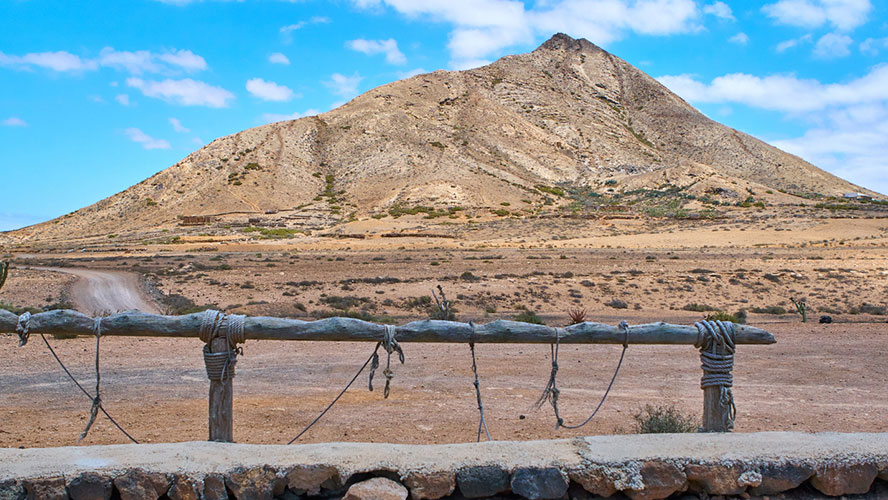
-
The Christian era
After the conquest of the Canary Islands and, more specifically, Fuerteventura in 1404 at the hands of the Normans, such practices ceased, giving rise instead to other enigmatic perceptions of the mountain by the Christians.
Between the fifteenth and eighteenth centuries, a witch hunt took place all over Europe, and Tindaya became part of popular imagination as the place where the witches of Fuerteventura hid, giving rise to all types of tales and legends. In fact, at the foot of the mountain there is a cavity known as the Bailadero de las Brujas [the Dancehall of the Witches], a place where, according to legend, all kinds of witchcraft rituals took place.
To ward off satanic presence, the small church that stands in the village at the foot of the mountain, the hermitage of Nuestra Señora de la Caridad (built in the eighteenth century), seems to have been placed there to discourage the pagan rituals of Tindaya.
Hiking routes in Tindaya and the surrounding area
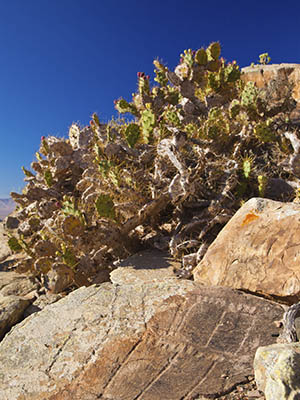
An aura of mysticism can be felt the closer you get to the foot of the mountain. The whole expanse of the Llano de Esquinzo, a dry, flat, orange, volcanic land, invites visitors to relax, stroll and observe from afar the splendour of Tindaya. There are multiple waymarked hiking routes skirting the mountain, but we advise you go prepared with comfortable footwear, sunscreen and water, as well as allowing yourself to be carried away by its magic. It won’t disappoint!
Although it may be tempting to climb the mountain to see first-hand the foot-shaped rock engravings, at present this is not possible due to certain heritage management issues. It is expected that it will once again be possible to climb the trail in the future with authorisation accompanied by a certified guide, but until then, be respectful of the heritage and enjoy the surrounding area.
Tindaya: fauna and flora in Fuerteventura
Designated a Natural Mountain Landscape of National Interest, an Area of Ecological Sensitivity, a Natural Monument (due to its geomorphological structure) and a Biosphere Reserve of Fuerteventura, Tindaya is not lacking in protective declarations and titles. What’s more, it is the natural habitat of highly important endemic fauna and flora. Birds such as common buzzards, ravens and stone-curlews coexist with Atlantic lizards, shrews, rabbits, goats and Barbary ground squirrels. Meanwhile, mountain plants, such as lichens, thicket and shrub live alongside other endemic plants, such as Apteranthes burchardii and dog’s tooth violet, a plant that contains a high level of toxic glycosides but is also very interesting from a medicinal point of view. As you can see, the ecological importance of Tindaya is yet another reason to pay it a visit.
Tindaya: the village
With a population of under 1,000, the small village of Tindaya is the starting point for all those who decide to climb up the mountain or explore the surrounding area. Another must-visit in this tranquil place at the foot of the mountain is the hermitage of Nuestra Señora de la Caridad, a small gem of a building with a white façade, which has been declared an Asset of Cultural Interest.
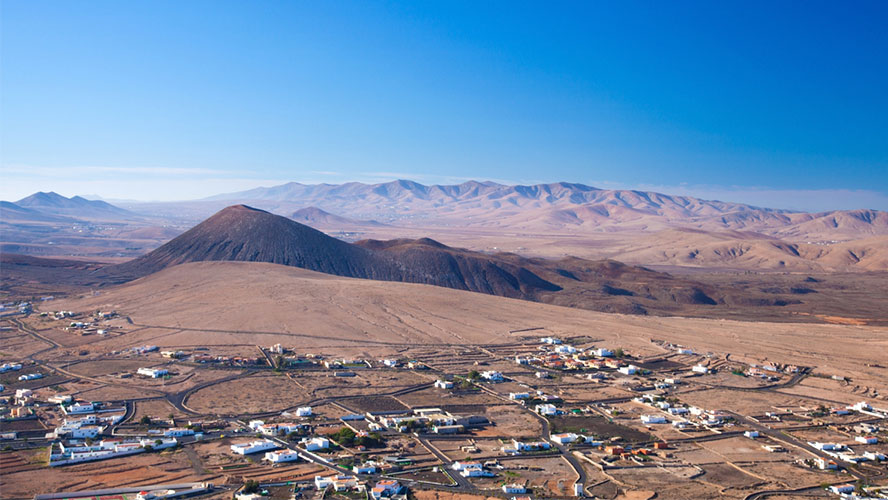
Perhaps the prettiest and most romantic moment of the day is sunset: the contrast between the orange landscape of the Llano de Esquinzo and the colour range of the sunset gives everything an intense reddish hue contributing to the area’s distinct air of mystery.
To recharge your batteries there are several restaurants in the area that have gained quite a reputation among tourists and residents of Tindaya. Among them, the restaurant Los Podomorfos offers a pleasant atmosphere, live music and modern cuisine, where you can enjoy lunch or dinner with incredible views of the sacred mountain. And if you’re looking for something a little further afield, the restaurant Casa Vieja, seven kilometres from Tindaya, or the restaurant Mahoh, ten kilometres away, offer food made with typical produce from the island, suitable for the most sophisticated palates. Whatever you choose, be sure to enjoy your time visiting this magical place.




































































